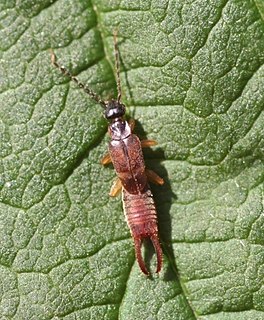This page is based on this
Wikipedia article Text is available under the
CC BY-SA 4.0 license; additional terms may apply.
Images, videos and audio are available under their respective licenses.

The Bullmastiff is a large-sized breed of domestic dog, with a solid build and a short muzzle. The Bullmastiff shares the characteristics of molosser dogs, and was originally developed by 19th-century gamekeepers to guard estates. The breed's bloodlines are drawn from the English Mastiff and the extinct Old English Bulldog. It was recognized as a purebred dog by the English Kennel Club in 1924.

The Borough of Chorley is a local government district with borough status in Lancashire, England. The population of the Borough at the 2011 census was 104,155. It is named after its largest settlement, the town of Chorley.

The French Bulldog is a small breed of domestic dog. They were the result in the 1800s of a cross between bulldog ancestors imported from England and local ratters in Paris, France.
Reginald Smith Brindle was a British composer and writer.

The Cane Corso from Italian cane (dog) and "corso" from the Latin "Cohors" meaning "protector", also known as the Italian Mastiff, is a large Italian breed of dog, for years valued highly in Italy as a companion and guard dog.
Arran Brindle is an English cricketer and member of the England Women's team.

The Plott Hound is a large scent hound, originally bred for hunting bears. The Plott Hound is not a well known breed of dog, even though it is the state dog of North Carolina. In 1989, the North Carolina General Assembly designated the Plott Hound as the official State Dog.

Windsor Castle is a royal residence at Windsor in the English county of Berkshire. It is notable for its long association with the English and later British royal family and for its architecture.

Pendleton railway station was a railway station serving Pendleton, a district of Salford. It was located on Broughton Road (A576) just behind St. Thomas' Church. It was about 100 yards further up Broughton Road from Pendleton Bridge railway station and nearer Pendleton Church and Broad Street (A6). This station was known as Pendleton Broad Street due to its closeness to the A6 Broad Street some 100 yards away. It was on the Manchester Victoria to Wigan Wallgate line with a spur to the Manchester Victoria to Bolton line so trains to Bolton used it after the closure of Pendleton Bridge in 1966, and "Broad Street" was then dropped from its name.

Hoghton is a small village and civil parish in the Borough of Chorley, Lancashire, England. At the 2011 Census, it had a population of 802. Brindle and Hoghton ward also includes the parish of Brindle.
Frederick "Fred" Brindle was an English professional rugby league footballer who played in the 1930s and 1940s. He played at representative level for England and Yorkshire, and at club level for Hull Kingston Rovers, Huddersfield and Castleford, as a loose forward, i.e. number 13, during the era of contested scrums.

The yellow-barred brindle is a moth of the family Geometridae. It is found from most of Europe to eastern Asia. It is also present in North America.

St James' Church is in the village of Brindle, Lancashire, England. It is an active Anglican parish church in the deanery of Chorley, the archdeaconry of Blackburn, and the diocese of Blackburn. The church is recorded in the National Heritage List for England as a designated Grade II listed building.

Thomas Brindle was a British-born early activist for the New Zealand Labour Party who was jailed during World War I for speaking out against conscription. He was a member of Wellington City Council and stood for election to the House of Representatives five times. He was a member of the Legislative Council from 1936 until March 1950.

Brindletown is an unincorporated community located within Plumsted Township, in Ocean County, New Jersey, United States. Brindletown was once a village home to a hotel, a mill, and large estates overlooking Brindle Lake. Brindletown was purchased by the federal government to expand Camp Dix in the 1920s. The site of the original Brindletown is within a weapons training site though the site of the current Brindletown is accessible to the public. The current settlement is centered about the intersection of Long Swamp Road and Carter Lane to the north of the original site. Houses line Long Swamp Road and other surrounding roads in the area while some farms are found to the north of Long Swamp Road. The portion of the community within the confines of Fort Dix is mostly forest.
Brindle is a civil parish in the Borough of Chorley, Lancashire, England. The parish contains 26 buildings that are recorded in the National Heritage List for England as designated listed buildings. Of these, two are listed at Grade II*, the middle grade, and the others are at Grade II, the lowest grade. Apart from the village of Brindle, the parish is mainly rural, and a high proportion of the listed buildings are, or originated as, farmhouses or farm buildings. The Leeds and Liverpool Canal passes through the parish, as does the disused southern section of the Lancaster Canal, and there are listed buildings associated with both of these. The other listed buildings are churches and houses, and structures associated with them.

Spongiphoridae is a family of earwigs in the suborder Forficulina.














